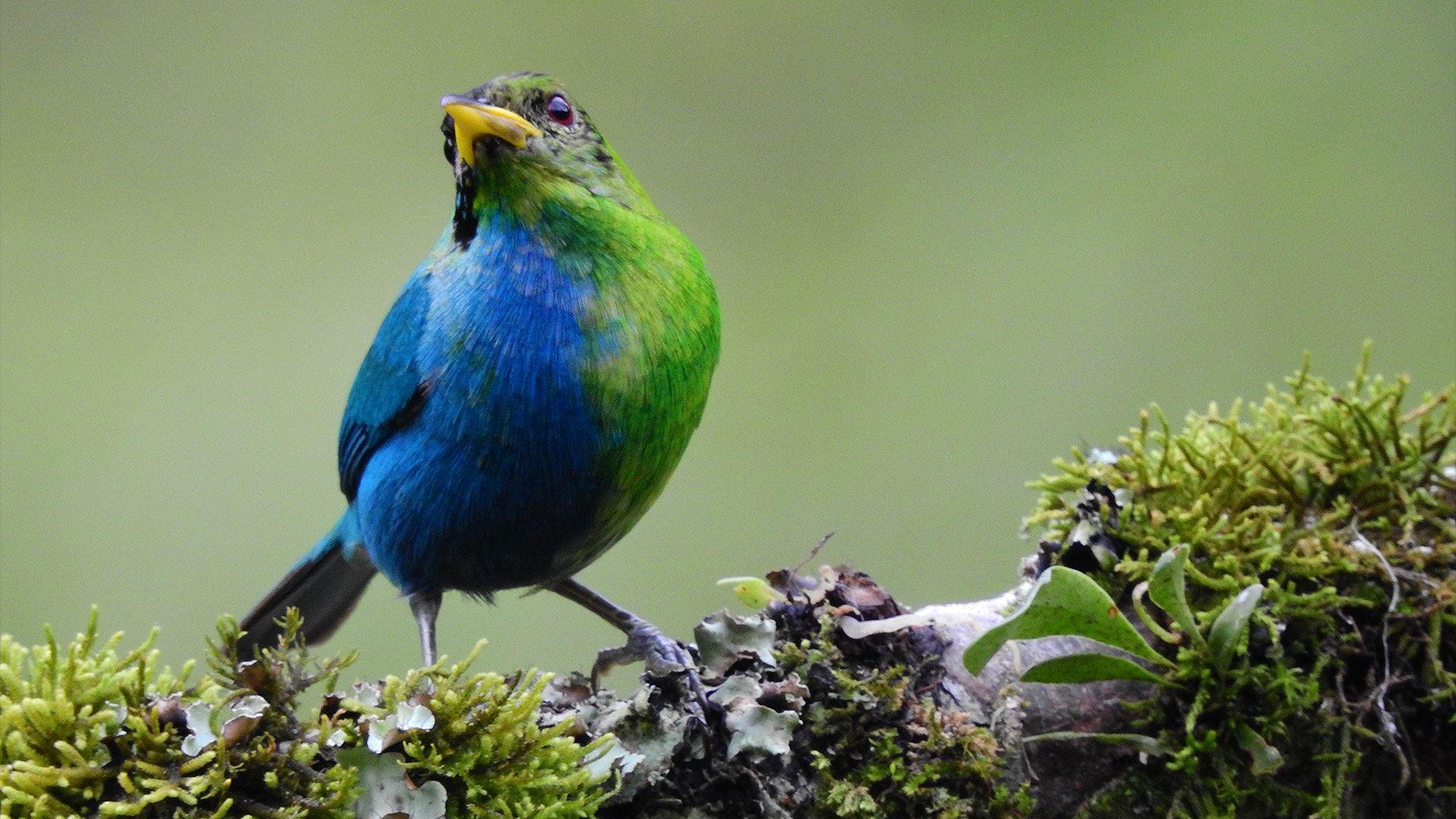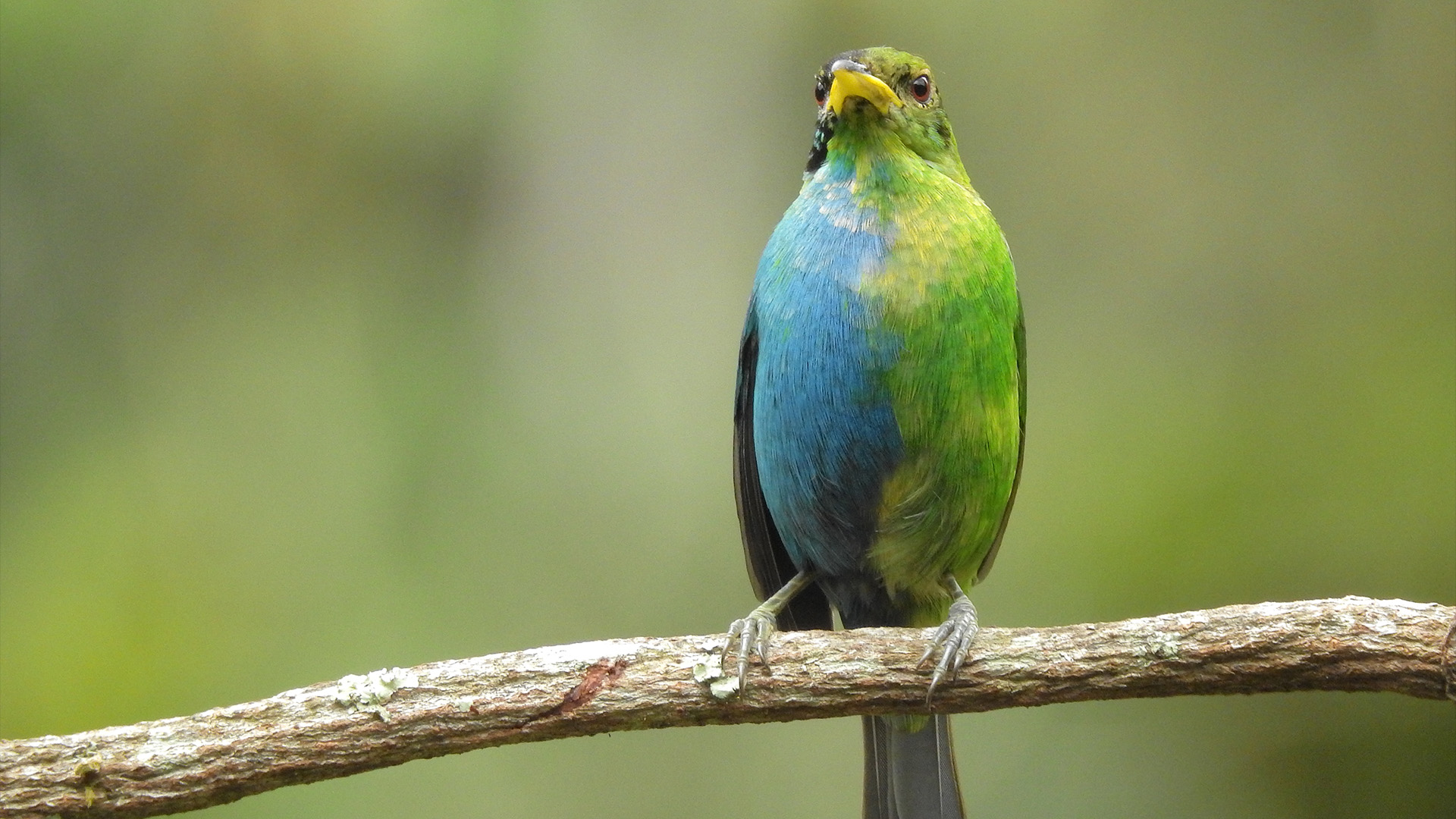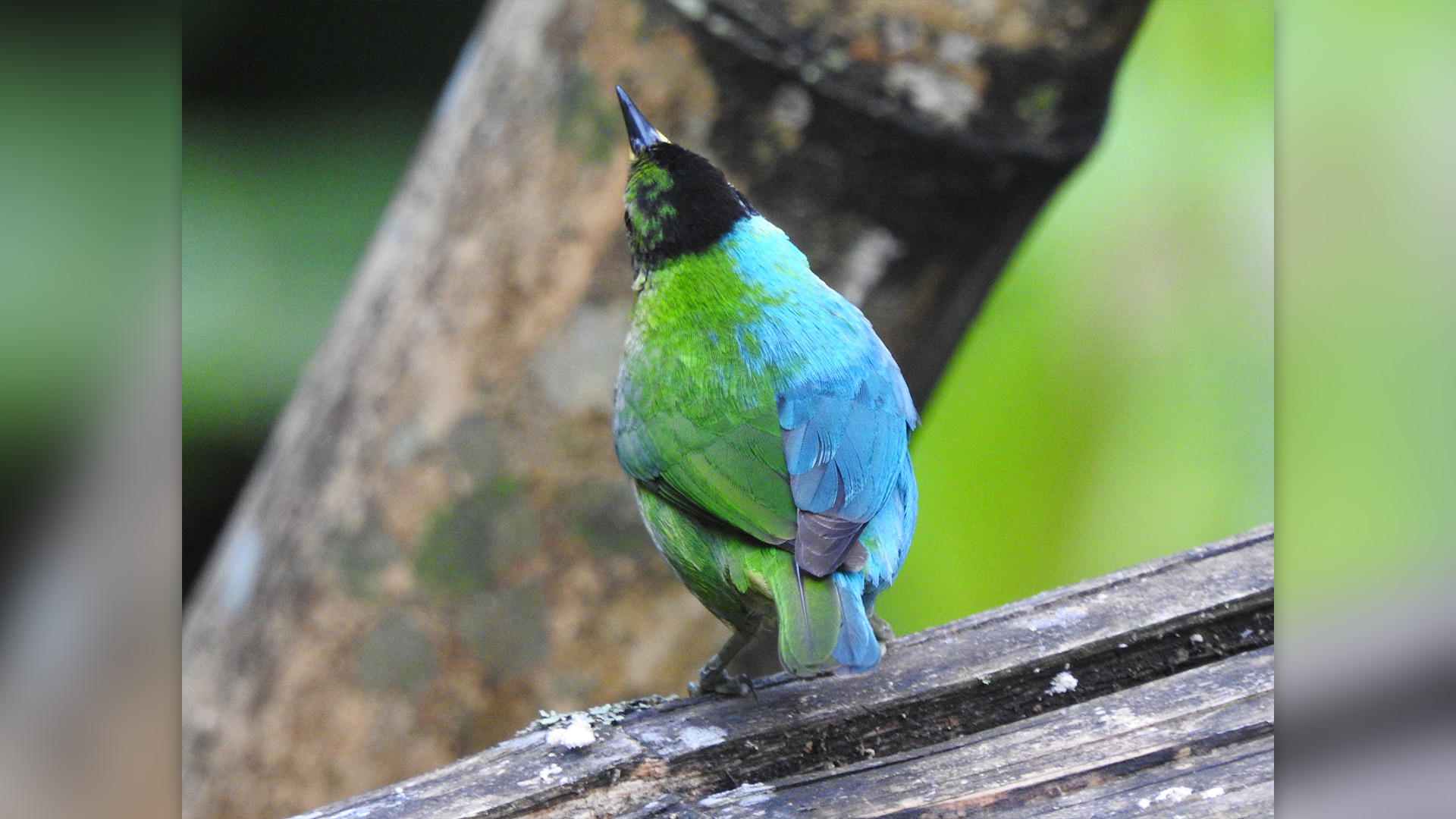See 'incredible' photos of bird that is both male and female
This green honeycreeper has male plumage on one half of its body and female plumage on the other half.

Researchers have discovered an extraordinary, vibrantly colored tropical bird with "female" feathers down one side of its body and "male" feathers down the other.
Female green honeycreepers (Chlorophanes spiza) typically have grassy green feathers, while the males are a brilliant blue. However, this individual was green on the left and blue on the right. Amateur birder and lead study author John Murillo first spotted the two-toned honeycreeper at his farm near Villamaría in Colombia in 2021; the bird was last spotted in June 2023 and its current status is unknown.
The bird was a bilateral gynandromorph, meaning it had features characteristic to both sexes and could theoretically reproduce as either. This is only the second record of bilateral gynandromorphy in green honeycreepers and the first in more than 100 years, according to a new study about the bird published in the December issue of the Journal of Field Ornithology.
Study co-author Hamish Spencer, a professor of zoology at the University of Otago in New Zealand, saw the same bird in January 2023 when he visited Murillo's farm during a birdwatching tour.
"I couldn't really believe it," Spencer told Live Science. "Here was this bird with two halves: one male half and one female half."
Related: Rare bee has a body that's half-male, half-female, and split exactly down the middle
Green honeycreepers' habitat range extends through Central and South America, from southern Mexico to Brazil. Murillo feeds honeycreepers and many other birds at his property, which doubles as an ecotourism business and fish farm called Reserva Natural Demostrativa Don Miguel. He documented the mixed-sex bird by photographing and filming it at a feeding station.
Sign up for the Live Science daily newsletter now
Get the world’s most fascinating discoveries delivered straight to your inbox.
"He had these incredible photos," Spencer said. "They're the best photos I've ever seen of a [wild] gynandromorphic bird."
The honeycreeper hung around Murillo's feeding station for weeks at a time between 2021 and 2023, according to the study. The authors noted that the bird didn't exhibit any abnormal behavior at the feeding station and wasn't harassed by other honeycreepers for its unusual appearance. However, the bird typically waited for other honeycreepers to leave before using the feeders and would sometimes block other birds from using them when it did.
The honeycreeper's tendency to avoid other members of its species suggested it would have difficulty finding a mate, although it's unknown whether it did or could reproduce. Researchers have previously dissected gynandromorphic birds of other species and found their sexual organs can match their plumage — an ovary on one side and a testis on the other, according to the study.
The females of most avian species only have one functional ovary on their left side, anyway. So if a gynandromorphic bird is female on the left, like this honeycreeper, then it can potentially use the left side to reproduce as a female or the right side to reproduce as a male. Most birds don't have external genitalia and mate by rubbing an opening called the cloaca, which is present in both males and females, against another bird's cloaca.

Other gynandromorphic birds have been observed mating in the past, the study authors noted. For example, a behaviorally male gynandromorphic zebra finch (Taeniopygia) courted and mated with a female zebra finch, while two behaviorally female gynandromorphic Gouldian finches (Chloebia gouldiae) mated with males, producing both infertile and fertile eggs.
Gynandromorphy can also occur in other animals, including insects, crustaceans and lizards, according to a statement released by the University of Otago. In birds, researchers suspect it's caused by an error that occurs during the division of cells in a female's unfertilized egg that enables one egg cell to develop two nuclei, which are then fertilized by two separate sperm.
Female birds carry both avian sex chromosomes (ZW) while males carry two copies of the same chromosome (ZZ) — the opposite pattern is seen in mammals, with females carrying XX and males carrying XY. In a gynandromorphic egg cell with two nuclei, one nucleus has a Z chromosome and the other has a W chromosome. Double fertilization then occurs when sperm arrives carrying male Z chromosomes, with the Z nucleus taking a Z chromosome to become ZZ (male) and the W nucleus taking a different Z chromosome to become ZW (female).

The male and female nuclei go on to form the two separate halves of the same bird. In this scenario, the bird can be either sex on either side, depending on how the female's chromosomes are split between the two nuclei.
"The reason our observation is important is because the previous known example in the green honeycreeper was the other way around; it was male on the left and female on the right," Spencer said. "What that tells us is that both outcomes are possible, and that fits with the double fertilization scenario."

Patrick Pester is the trending news writer at Live Science. His work has appeared on other science websites, such as BBC Science Focus and Scientific American. Patrick retrained as a journalist after spending his early career working in zoos and wildlife conservation. He was awarded the Master's Excellence Scholarship to study at Cardiff University where he completed a master's degree in international journalism. He also has a second master's degree in biodiversity, evolution and conservation in action from Middlesex University London. When he isn't writing news, Patrick investigates the sale of human remains.










